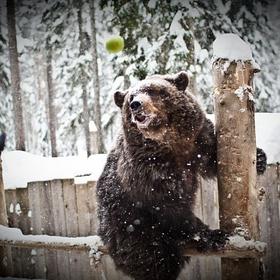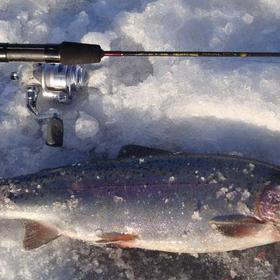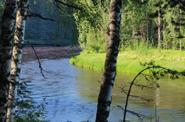Persons over the age of 18 are allowed to drive a snowmobile.
Each tourist signs a contract of financial responsibility.
The tourist is obliged to comply with:
- the main provisions of the safety briefing;
- follow the instructions of the instructor – head of the group on the entire route;
- Drunk people are not allowed to drive a snowmobile.
The instructor has the right to remove a tourist from the route at any time in case of gross or repeated violations of safety regulations.
Safety instructions.
Active recreation tours are associated with physical activity and exposure to adverse climatic factors.
An important requirement for safe passage of the route is compliance with these instructions, which, however, is not exhaustive. The tourist is obliged to comply with the rules of personal safety, as well as not to allow or perform actions that endanger the personal safety of others.
Preparation for the tour.
To reduce the risk factors for life and health, a tourist should prepare for an active tour:
- evaluate your physical abilities when choosing a tour;
- undergo a medical examination, follow the recommendations of doctors;
- take personal equipment with you in accordance with the recommendations;
- take an individual first aid kit with you;
- to undergo the prevention of tick-borne encephalitis;
- if necessary, consult with the Contractor.
The group is led by an instructor. Tourists are obliged to follow the instructions of the instructor.
Transport safety.
To avoid injury during transportation (on transport):
- it is necessary to be in the places provided for this purpose;
- securely pack and fix objects with sharp corners, piercing, breaking;
- on the move, it is forbidden to stick body parts out of windows, throw objects out of windows, move around the cabin.
Clothing and equipment.
Clothing should be suitable for outdoor activities (extreme types of tourism), that is, not to interfere with movement, protect from adverse environmental factors, and meet special safety requirements for the type of extreme tourism.
Clothing Usage:
- always keep a set of dry clothes for sleeping;
- use different sets of clothes for parking and for being on the water;
- Always wear a raincoat or cape when it rains;
- wear a neoprene suit and socks or a waterproof suit (raincoat) when passing thresholds;
- change into dry clothes immediately after passing thresholds or rain, if there is a mold area (calm water) or parking;
- wear warm and windproof clothes;
- wear a hat and warm socks to sleep.
Health.
No one knows better than you about the state of your health, so carefully monitor the body's reaction to unusual conditions and the effects of adverse factors:
- warn the instructor about possible health problems, individual deviations, and discomfort during the tour;
- use disease prevention products at low air temperatures, prolonged exposure to damp clothes, etc.;
- during treatment, warn the instructor about allergies, contraindications, chronic diseases, etc.
Snowmobile safety instruction
Before you get behind the wheel of a snowmobile, read these instructions carefully. It contains important information about safety and usage.
Based on the requirements of general safety, you are responsible for the safe operation of the vehicle. It is impossible to warn against all permissible damage associated with driving a vehicle, so you should always use common sense.
Persons over the age of 18 are allowed to drive a snowmobile.
Always follow the instructions of the instructor!
When riding a snowmobile, it is necessary to use protective equipment: helmet, gloves, comfortable moisture-proof (seasonal) shoes. a protective suit. It is forbidden to operate a snowmobile without a protective helmet of the appropriate size. It is also necessary to wear eye protection (protective mask or goggles).
One of the main elements of safety is your correct landing on a snowmobile: the driver sits (does not stand and lies or otherwise) on a snowmobile, holding tightly to the steering wheel with both hands, feet on the running boards.
The passenger sits on the snowmobile, holding tightly to the handles specially designed for this purpose, and not to the driver, with his feet on the running boards.
Snowmobile control:
Right hand, thumb – throttle lever; left hand, all fingers except thumb – brake lever. The right hand is the gearshift. Sequential H-R-L switching (upshift, reverse and downshift) when the snowmobile is completely stopped.
To start the engine, turn the ignition key to the "ON" position, press the brake lever, turn the key to the right and hold until the engine starts, but no more than 5 seconds.
Before starting off, make sure that the path is free of obstacles (people, snowmobiles, other motor vehicles, etc.):
Starting: turn on the upshift (H), release the brake lever, gently press the throttle lever until the required speed is set. Remember, the lower the speed, the more time you have to make a decision in case of an obstacle.
Gear shift: it is necessary to stop, release the throttle lever, press the brake lever and move the lever to the desired position, the gear indicator (H-R-L) will light up on the instrument panel.
Stop: Release the throttle lever (reset the throttle), then gently press the brake lever. Use the brake mainly when an emergency stop is necessary and on steep descents. In other cases, it is enough to release the gas in a timely manner, since the snowmobile has almost no roll and quickly loses speed. It is better to stop the snowmobile on dense snow. If the snow is loose, you need to turn around and get on your trail.
On turns and U-turns, it is necessary to reduce the speed and turn along the largest possible radius. When turning on dense snow (nast, rolled snow), move the center of gravity of the body forward, which will ensure better grip of the ski with snow, reduce the speed to a minimum; on loose snow, tilt the body towards the turn. If the snowmobile gets stuck in the snow, you need to wait for the instructor.
If the tracks slip, reduce the engine speed until the tracks regain traction with snow. Increasing the speed in this case causes additional slipping and "burying" of the snowmobile.
If the snowmobile tilts to the side during movement, it is necessary to transfer the weight of the body to the opposite side from the roll in order to balance the moving snowmobile. It is strictly forbidden to restore the snowmobile's balance with the help of legs, as this can lead to injury.
If the snowmobile is stuck in the snow, you should clear the snow from the space under the toe of the ski and install it horizontally, then smoothly start moving the snowmobile. Or wait for the instructor.
If the snowmobile got into a water pit (water under the snow). Add gas and don't stop. A stop is possible no earlier than 500 meters away.
When driving with a passenger, the maneuverability of the snowmobile decreases, so plan turns and stops in advance.
If the snowmobile becomes defective, stop and wait for the instructor.
Remember the basic hand signals: The signals are given by the instructor: Left turn: left arm extended to the side, right turn: left arm extended to the side, bent at the elbow at an angle of 90 degrees, Stop, danger: raised straight left arm up. When you see this signal, be sure to slow down and increase your attention.
Always duplicate the instructor's signals. If you need to stop (helmet glass, hands, etc. are frozen), do not wait for the group to stop. Raise your left hand up and/or attract attention with an audible signal (to stop those following you and the instructor), and smoothly stop.
After stopping, wait for the instructor to provide additional instruction, continue traveling as a passenger with an instructor or a more experienced tourist, or find another way out of the situation.
When crossing roads, stop the snowmobile completely and make sure that the road is clear of vehicles. Then cross the road at right angles to the direction of travel on the intersected road.
The distance when driving on a field or lake is 80-100 m, when driving through a forest is 40-50 m. When moving through the forest, keep a rolling trail. When driving through a field or lake, a column of snow dust rises behind the snowmobiles in front, move a few meters away from it, this will slightly increase visibility for you. You should only move along the prepared track behind the instructor.
The maximum speed is 40 km/h.
Do not apply sudden pressure on the throttle or brake lever.
Keep the speed at which you feel comfortable and safe (no more than 40 km/h). There is no need to catch up with the snowmobile going fast ahead. Take your time, they'll be waiting for you.
Carefully monitor the traffic situation and observe the speed at which you can stop or slow down in advance when various obstacles appear in the way of movement (icing, deep ruts, close-standing or fallen trees, protruding tree roots, stones, etc.).
Attention! Do not take actions that may damage the snowmobile and reduce your safety.
It is forbidden to:
- the use of alcohol and/or narcotic drugs before and while driving a snowmobile! drive through the recreation center at a speed of more than 5 km/h.;
- provoking others into collisions, participating in races;
- overtaking the instructor and other participants of the trip;
- start with the brake pedal pressed down;
- riding on a surface without snow (very dense snow or bare ice);
- turn on the downshift (L) without the instructor's permission;
- distance from the instructor by more than 100 meters;
- deliberately lag behind the column and catch up with the column at high speed;
- after a difficult section, continue to use a reduced gear!;
- intentionally hitting obstacles outside the route;
- departure outside the special route;
- touch moving parts such as wheels, drive shafts, variator pulleys, etc.;
- exit to the road intended for vehicle traffic;
- ignore the instructor's instructions;
- ride in clothes that are not intended for snowmobile travel (long, wide bottoms of trousers and jackets, laces, scarves), which can get into moving parts and cause injuries;
- do not touch the elements of the exhaust system to avoid burns;
- continue driving on a snowmobile in case of sudden breakdown of various structural elements;
- jumping on a snowmobile;
- kneeling movement;
- Get your feet off the running boards;
- talk aggressively, use profanity, and do anything that might interfere with the people around you;
- the tourist bears full financial responsibility for the snowmobile. The instructor has the right to remove the tourist from the route for non-compliance with the rules of TB or for inappropriate behavior.
Following these rules will make your trip safe and enjoyable.























